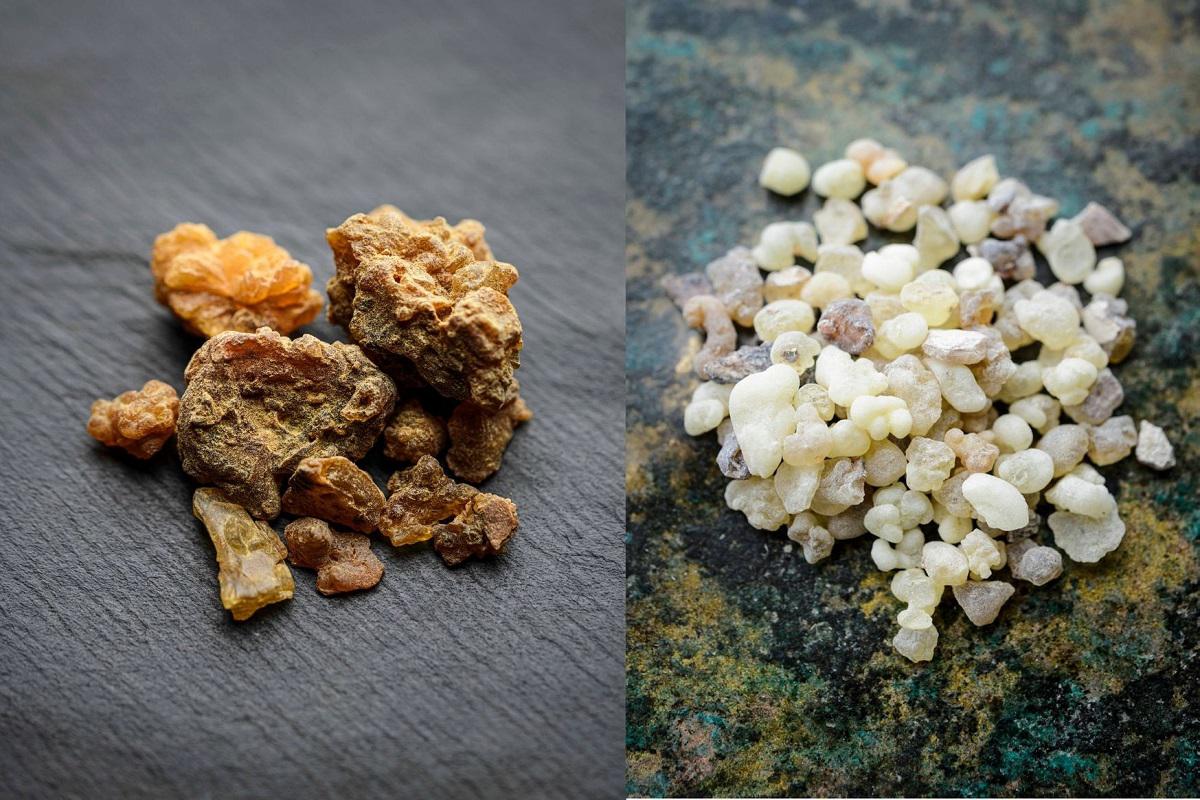15 December 2020
Tips from the herbalist
Tips from the Exmoor Herbalist: December
The Exmoor herbalist Jane reminds us of the use of the resins of frankinsence and Myrrh, with recipes for a Festive frankincense & pine blend and a Magical myrrh, cinnamon & rose blend.
The shortest day and the longest night are almost here. Yule is part of the Earth’s cycle and we have been drawing down into ourselves for rest and recuperation after the busy seasons have passed. Midwinter is a time to come out of hibernation and to celebrate the return of the sun and the lengthening days to come.
Incense has been a part of spiritual celebrations for generations and the resins of both myrrh and frankincense have been hugely popular since ancient times. They were so popular in fact that rising demand could not be met and the price was vastly increased. This explains why, along with gold, they were gifted to the infant Jesus as one of the three most valuable commodities of the time.
Frankincense was one of the first resins to be used in ritual and it was burnt on altars in ancient Egypt as a gift to the gods and to assist meditation. It was also used to fumigate the unwell by way of banishing evil spirits and as part of the embalming and cremation processes.
Frankincense has a spicy-sweet scent and makes a wonderful base for any incense blend. It is associated with sanctity, purification, protection, joy, celebration and consecration. As one breathes in the scent of the resin, there is a sense of slowing down, deepening of breath work and looking in on oneself to connect with the inner self to bring about a state of mental calm & tranquillity. Frankincense has a profound effect on our mucous membranes and supports our respiratory function. It is very useful to clear our lungs and soothe coughs, bronchitis and specifically catarrh and smudging with an incense blend containing frankincense can help with infection control. Myrrh is another common resin and has a slightly bitter sweet fragrance. The ancient Egyptians burnt myrrh daily at midday as part of their worship of their sun god Ra. They also used it as part of the embalming process.
Myrrh is associated with sanctity, honouring our ancestors, purification and healing and a little myrrh in any incense adds a little touch of alchemy. The scent lifts the spirits but also can help to cool heated emotions. It cools the air and is a signature resin for respiratory issues. It clears the lungs of catarrh, soothes coughs and sore throats. It invigorates our immune system and its antimicrobial anti-viral actions help to facilitate a speedy recovery from ill health by stimulating our white blood cells. Myrrh is also very useful for mouth and gum problems.
A vinegar tincture of myrrh resins can be made by macerating 1 part myrrh to 7 parts vinegar and leaving for a full lunar cycle before straining. This can then be diluted for use as a mouthwash or taken internally. It can also be applied externally to fungal infections. It is very drying and will taste astringent.
Festive Frankincense & Pine Blend
1 Part Frankincense Resin
1 Part Juniper Berries
4 Parts Pine Needles
2 Parts Lavender Flowers
Magical Myrrh, Cinnamon & Rose Blend
1 Part Myrrh Resin
½ Part Cinnamon Powder
4 Parts Rose Petals
½ Part Black Pepper
Using a pestle & mortar grind the herbs and resins to a coarse powder. If you would like to add a little extra magic, add ½ part of sea salt to the mix and watch it sparkle! Store in a glass jar and burner on charcoal disks to release the fragrance. These make wonderful gifts and the salt does give the element of surprise and wonder.
Yuletide greetings to all.


